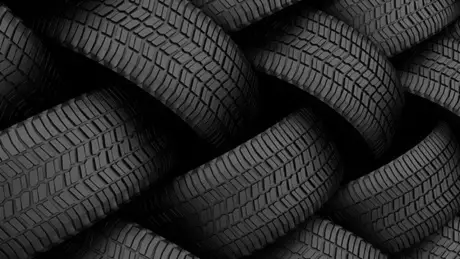
Tire invention has changed the course of history and made a huge impact on the entire human civilization. In this article, we will be discussing the more modern history of tires. The automotive industry influenced the narrative and how technology is taking over this field as well.
Michelin tire
It all started with a Michelin pneumatic tire in 1888. When John Dunlop made notable changes in the traditional tire designs of that time to make them more shock-resistant, this small innovation changed the history of automobiles forever.
The same year in 1888, Benz invented the first gasoline-powered car that was fitted with unique metal wheels but still had solid rubber tires. In 1888 the pneumatic tire for bicycles was patented and in 1891 the pneumatic tire with the tube was invented.
According to the earlier reports, the Michelin tires were initially glued to the automobile. The glue was so adhesive that it required three to four hours to remove the tire for repair and replacements.
In 1895 the pneumatic tire was already used in a car race from Paris to Bordeaux and in 1896 the first commercially manufactured motor vehicles with pneumatic tires were delivered. In public, the pneumatic tire was considered to be revolutionary and later enjoyed ever greater popularity.
The era of tubeless tires
Due to the long repair and replacement wait period associated with the Michelin tire, inventors around the globe were working to improve the existing tire set.
The breakthrough in the tire industry happened in 1903. This was the introduction of tubeless tires. These tires were much durable and easy to maintain as compared to a Michelin tire.
In 1909, the first-ever tubeless tire for an airplane was manufactured.
Tread tire
Historical records show that the rise of tread tires began in the year 1905. The design of these tires went through significant changes since then, but 1905 was the year when the foundation was laid.
The tread tires were a lot more different in design and working principle compared to the tubeless tires. These tires contain an inflatable inner tube protected by an outside rubber casing that can withstand shocks and damage.
With the development of the profile tire, surface friction increased. A large number of profile types are manufactured today.
The second stage of the mass distribution and safety of the automobile
After World War II, the rapid development of vehicle technology increased the production volumes of automobiles - the second stage in the mass spread of the automobile.
The run-flat tire, developed in 1979, can even be used in the event of a flat tire at speeds of up to 80 km/h without having to be replaced.
The dusk of the radial tire technology
Today, radial tire technology remains popular with remarkable design innovations. According to the latest research and development models, the future tire technology will be different than the tires we use today.
These tires will be magnetically aligned with the vehicle to sense road conditions with a robust car AI engine. Of course, technology like this may seem very far away for now, but looking at the history of tires so far, this innovation doesn’t seem so fantastic.
Same articles

Understanding Vehicle Inspection and Verification Services: Why They Matter for Every Driver
GuidesVehicle inspection and verification services are an essential but often overlooked part of keeping roads safe and cars legally compliant. Most people only think about inspections when it’s...
KLIFEX Brand Overview: High-Quality Automotive Repair Kits for Affordable Repairs
GuidesThe automotive aftermarket has long needed solutions that combine reliability, durability, and affordability. Many car enthusiasts and services are looking for a way...
Fast, Reliable Vehicle Emissions & Inspection Services Made Simple
GuidesFast, reliable emissions and inspection services are essential for keeping vehicles road-ready, compliant with environmental regulations, and safe for daily driving. If you’re looking for quick...

